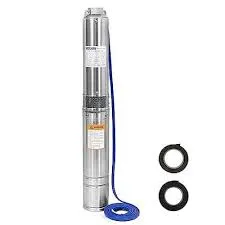10월 . 21, 2024 19:47 Back to list
Exploring the Benefits and Applications of Electric Submersible Pumps in Various Industries
Electric Submersible Pumps An Overview
Electric submersible pumps (ESPs) have become an indispensable technology in various industries, especially in oil and gas production, wastewater management, and agricultural applications. These pumps are designed to operate underwater, efficiently lifting fluids from deep wells or reservoirs to the surface for further processing or disposal. Their unique design, robust construction, and operational efficiency make them a preferred choice for many applications.
How Electric Submersible Pumps Work
An electric submersible pump consists of a series of components, including a motor, pump stages, and a cable. The motor, which is housed in a protective casing, is located at the bottom of the well, submerged in the fluid it is pumping. This motor drives the pump stages, which consist of impellers and diffusers that work together to increase the pressure and move the fluid upwards.
The electric motor is typically powered by a surface-level power source via a long cable, designed to withstand the harsh underwater environment. ESPs can be employed to lift a wide range of fluids, including water, oil, and even slurries, making them versatile for multiple applications.
Advantages of Electric Submersible Pumps
1. High Efficiency ESPs are known for their ability to operate at high efficiencies, often greater than conventional pumps. This high efficiency translates to lower energy consumption and operational costs over time.
2. Cost-Effectiveness While the initial investment in ESPs may be higher compared to traditional pump systems, their long-term operational savings can offset the initial costs. This cost-effectiveness is particularly evident in oil production, where maximizing output while minimizing downtime is crucial.
3. Adaptability Electric submersible pumps can be used in a variety of applications beyond oil and gas, including municipal water supply, agricultural irrigation, and dewatering operations. Their adaptable design allows for customization based on specific requirements.
electric submersible pumps

4. Reduced Maintenance ESPs require less frequent maintenance compared to surface pumps, as they operate submerged and have fewer components exposed to the elements. This durability ensures reliability and reduces the need for regular servicing.
Challenges and Considerations
Despite their many advantages, ESPs come with their own set of challenges. One significant concern is the management of heat generated by the electric motor, particularly in deep wells. To mitigate this, various cooling methods, such as external cooling jackets or specialized motor designs, can be employed.
Additionally, the pump's performance can be affected by fluid properties, including viscosity and gas content. It's essential to choose an ESP that fits the specific fluid characteristics to ensure optimal performance.
Future of Electric Submersible Pumps
As technology continues to advance, the design and efficiency of electric submersible pumps are expected to improve further. Innovations in materials and motor technologies, such as magnetic drive systems and improved electrical insulation, are likely to enhance ESP performance in the years to come.
Moreover, with the increasing focus on sustainability and environmental impact, the development of energy-efficient ESPs will play a vital role in minimizing the ecological footprint of industrial operations.
Conclusion
Electric submersible pumps represent a critical technology that drives efficiency and productivity across various sectors. With their unique design and operational benefits, ESPs are set to remain at the forefront of pumping technology, continually adapting to meet the demands of an evolving industrial landscape. As industries seek sustainable solutions, the future of electric submersible pumps looks brighter than ever.
-
Water Pumps: Solutions for Every Need
NewsJul.30,2025
-
Submersible Well Pumps: Reliable Water Solutions
NewsJul.30,2025
-
Stainless Steel Water Pumps: Quality and Durability
NewsJul.30,2025
-
Powerful Water Pumps: Your Solution for Efficient Water Management
NewsJul.30,2025
-
Oil vs Water Filled Submersible Pumps: Which is Better?
NewsJul.30,2025
-
Deep Well Pumps: Power and Reliability
NewsJul.30,2025
-
 Water Pumps: Solutions for Every NeedWhen it comes to handling dirty water, the dirty water pump is a must-have.Detail
Water Pumps: Solutions for Every NeedWhen it comes to handling dirty water, the dirty water pump is a must-have.Detail -
 Submersible Well Pumps: Reliable Water SolutionsWhen it comes to ensuring a reliable water supply, submersible well pumps are a top choice.Detail
Submersible Well Pumps: Reliable Water SolutionsWhen it comes to ensuring a reliable water supply, submersible well pumps are a top choice.Detail -
 Stainless Steel Water Pumps: Quality and DurabilityWhen it comes to choosing a water pump, the stainless steel water pump price is a crucial factor.Detail
Stainless Steel Water Pumps: Quality and DurabilityWhen it comes to choosing a water pump, the stainless steel water pump price is a crucial factor.Detail
